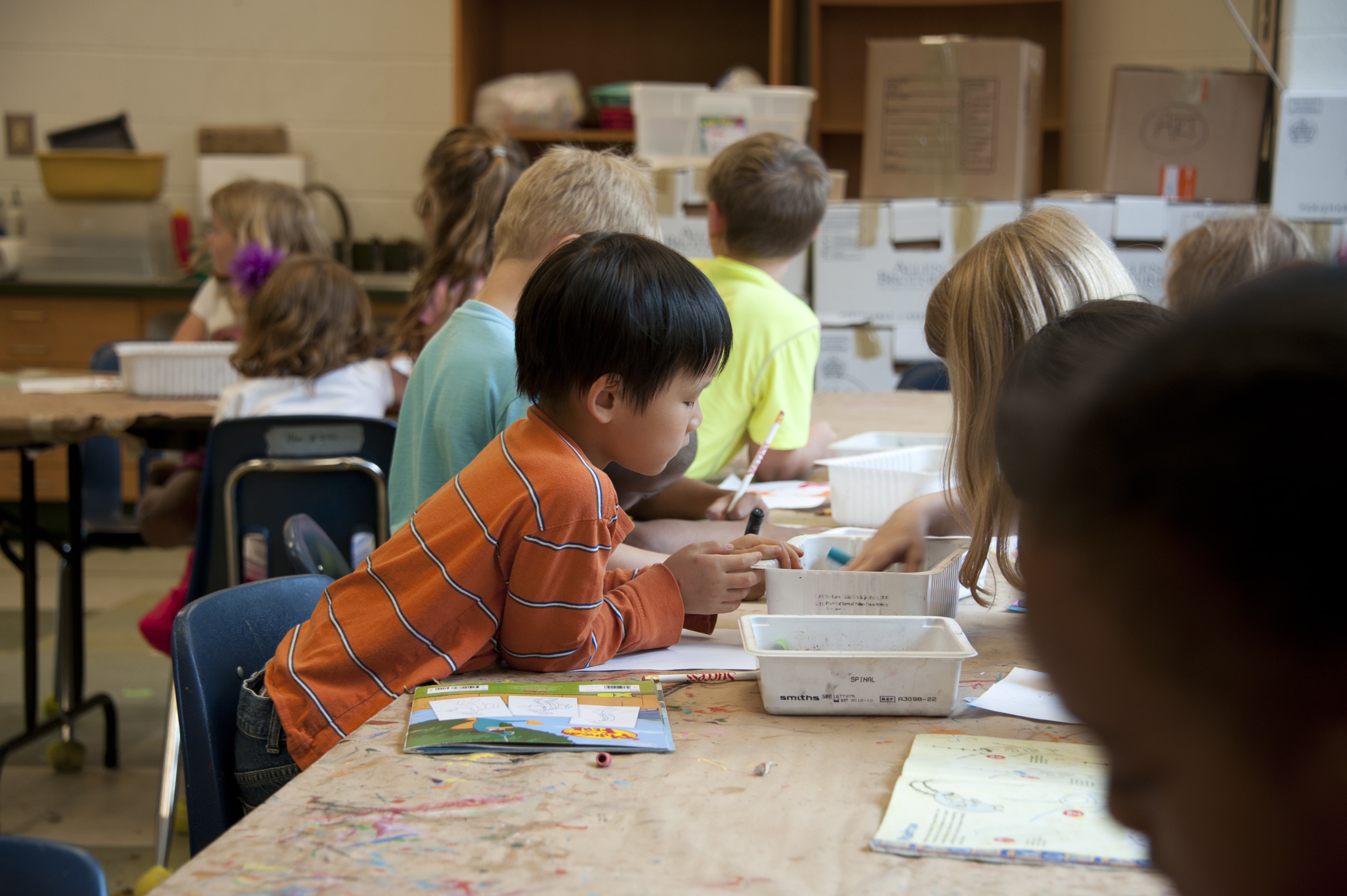DRDP 2015 Trainings
If you live in the State of California and work in early education or have a young child in an early education program, you have probably heard of the Desired Results Developmental Profile (DRDP). The state created the DRDP, also known as the DRDP 2015, to improve the quality of education offered to children from birth to the age of 12. As such, DRDP assessments are mandatory for all children in state-funded programs.
But what exactly is the DRDP, and how can it be used to help the children for whom you care? The DRDP is a method for measuring a child’s development through the mapping of developmental milestones. This system begins at birth and continues until age 12 through a series of age-appropriate measures:
- The DRDP Infant Toddler provides a measuring system for infants and toddlers.
- The DRDP Preschool provides a measuring system for children in preschool programs.
- The DRDP Kindergarten provides a measuring system for kindergarten-age children.
- The DRDP School Age provides a measuring system for children who are in elementary school.
However, the DRDP measures are only one part of the process. Along with the DRDP assessments, California’s Desired Results program consists of four components designed to elicit the best results for children and their families. These steps include the following:
- The Desired Results Developmental Profile, as described above, is a system created for tracking each child’s mastery of distinct developmental milestones.
- The Desired Result Parent Survey, completed by families yearly, solicits families to provide feedback on program satisfaction and the progress the family made toward the defined desired results.
- The Environmental Rating Scales, completed by programs yearly, requires self-evaluation of the quality of the program environment.
- The Program Self-Evaluation, completed annually by program staff, invites feedback on staff development, family and community involvement, and accountability.
California’s Department of Education created the Desired Results program to align educational programs with the needs of children and their families. As such, it strives to improve educational outcomes for all children. There are six desired results, around which the program centers:
- Children are personally and socially competent
- Children are effective learners
- Children show physical and motor competence
- Children are safe and healthy
- Families support their child’s learning and development
- Families achieve their goals
So, how does the DRDP assessment fit into the realization of these goals? Specifically, the developmental tracking provided by the DRDP helps pinpoint the needs of each child and allows educators to plan lessons geared to steer toward the next stage of development. With intentional action on the part of an educator and educational program, the DRDP assessment can become a tool to maximize learning.
Specifics About the DRDP Assessment
Using the DRDP to inform lesson planning requires some preparation. However, although the DRDP is easy to work with, there is a learning curve to understanding how developmental milestones are tracked. In order to use the DRDP as an educational asset, you will need to know specific information about how the DRDP assessment works. In addition, it is essential to understand the various complexities of the assessments you can apply to the children in your charge.
As stated above, the DRDP tracks developmental milestones in four age groups: infant-toddler, preschool, kindergarten, and school-age. What you might not know is that there are varying assessments within each category, referred to as “Views.” Each view has a specific number of measures designed to track developmental milestones. Each educational program can choose for its students which view will most appropriately meet the needs of the program and the children it serves. These views include:
- DRDP Infant/Toddler
- Comprehensive View-29 measures
- Essential View-21 measures
- Modified Essential View-13 measures
- DRDP Preschool
- Comprehensive View-56 measures
- Fundamental View-43 measures
- Essential View-29 measures
- Modified Essential View-16 measures
- DRDP Kindergarten
- Comprehensive View-60 measures
- Fundamental View-33 measures
- Essential View-34 measures
- DRDP School Age
- Complete Version-31 measures
- Simplified Version-13 measures
In addition to the above views, the DRDP has a system for accessibility, which applies to children with Individual Education Plans (IEPs) or Individualized Family Care Plans (IFCPs). The DRDP Access includes a list of seven adaptations that children can use during a DRDP assessment. However, adaptations are not meant to help a child only during an evaluation. Instead, the child will need to use the adaptations daily to facilitate an inclusive learning experience in light of a specific disability. These specified adaptations include:
- Augmentative or Alternative Communication Systems help children who are unable to use spoken language to communicate.
- Alternative Mode for Written Language helps children who cannot see well enough to write or are not able to hold a writing utensil.
- Visual Support helps children with reduced visual capability.
- Assistive Equipment or Devices helps children who need assistance performing a specific task.
- Functional Positioning helps children who need specific positioning to allow for more control of their body.
- Sensory Support helps children who require an increase or decrease in sensory input to facilitate their attention and interaction in the environment.
- Alternative Response Mode helps children who need to demonstrate mastery of a task in a way that is unique to them.
The DRDP classifies specific measures by domain and sub-domain, each representing a different area of child development. Educators score each measure in a child’s assessment by comparing the child’s abilities to examples provided for each level of development. There are a total of eight domains for the Infant Toddler, Preschool and Kindergarten DRDPs:
- Approaches to Learning and Self-Regulation (ATL-REG)
- Social and Emotional Development (SED)
- Language and Literacy Development (LLD)
- English Language Development (ELD)
- Cognition, Including Math and Science (COG)
- Physical Development-Health (PD-HLTH)
- History and Social Science (HSS)
- Visual and Performing Arts (VPA)
The School-Age DRDP consists of six domains:
- Self and Social Development (SSD)
- Health (HLTH)
- Language and Literacy Development (LLD)
- Cognitive Development (COG)
- Mathematical Development (MD)
- Physical Development (PD)
Scoring the DRDP
The DRDP assessment can be scored amid everyday activities by a child’s primary teacher or caregiver. Scoring consists of observing a child and noting the highest developmental milestone the child consistently demonstrates.
The DRDP assessment provides examples of behaviors that an educator can score for each level of development. Below are examples of scoring milestones taken from the DRDP Preschool assessment and the DRDP School-Age assessment. Beginning with the DRDP Preschool Comprehensive view, Social and Educational Development (SED) domain:
[supsystic-tables id=28]
[supsystic-tables id=29]
[supsystic-tables id=30]
[supsystic-tables id=31]
Now we will look at an example from the School-Age DRDP assessment under the Self and Social Development (SSD) domain:
[supsystic-tables id=32]
[supsystic-tables id=33]
In the above examples, an educator would simply need to indicate the highest level of developmental milestone met by the child to complete the rating. Educators can observe these milestones over the course of a typical day or plan to incorporate specific lessons to elicit the appropriate response. Although the state requires submission of the DRDP assessment annually, the teacher can track milestones throughout the school year.
DRDP 2015 Trainings
If you are an educator, it may sound overwhelming to have to fit a DRDP assessment into a busy curriculum. However, working with the DRDP may not be as difficult as it sounds, especially for those who seek training in the system. In fact, through DRDP 2015 training, you can make the DRDP work for you while simultaneously supporting the best interests of your students.
Gaining an understanding of the intent of the DRDP and each specific measure is a key area for educators who want to maximize its potential. Other key areas include how to work with the observations of family members and how to align lesson planning with DRDP. If you are lucky enough to work for a program with educational software, you will also want to seek training on using the benefits of the software to track DRDP milestones and create student portfolios.
Learning Genie, a popular early education software, helps educators make DRDP assessments a more seamless part of your day. Learning Genie’s educational software provides DRDP 2015 checklists, integrates seamlessly with the DRDP app, and exports data into spreadsheets to facilitate the upload of reporting to the DRDP online. In addition, Learning Genie offers training in several key areas:
- The Webinar, Designing Lessons Aligned to the DRDP, instructs educators who want to tailor lessons based on DRDP assessments.
- The DRDP Portfolio and Assessment Module walks educators through creating a portfolio with familial input through the Learning Genia software.
- Learning Genie’s Webinar Series offers continuous learning opportunities in DRDP assessments, software applications and many other subjects.
In addition to Learning Genie’s DRDP training, you can seek resources through the California Department of Education, Early Learning and Care Division. Aside from webinars, state resources include video examples, DRDP tutorials, and support for dual language learners.
Regardless of the children you teach, ongoing education is vital for educators and parents alike and seeking resources will help ensure the best education for your little learners.
Using the DRDP and Learning Genie Together to Improve Outcomes
When educators take the initiative to use the tools they are provided, continue to seek education, and work for the best interests of the children they teach, they can make an enormous difference in the quality of the education they provide. And yet, educators often face time constraints, staffing shortages, and increased classroom sizes. In light of these difficulties, learning a new system can seem daunting.
Although there is no easy answer for the crunch today’s educators face, employing educational software can help make your job easier. With Learning Genie, for example, you can use batch reporting, voice-to-text, and customized learning plans to save yourself the time you need to provide quality education. In addition, the software has distinct advantages for fast parental communication, decreasing the time required to send and receive notices and increasing the parents’ abilities to continue learning in the home.
In short, though it may take a time commitment to learn, educational software can save you time in the long run and allow you to give the students in your charge more of your time and attention.
Similarly, the DRDP, once learned, gives educators a map for child development. With the proper training, DRDP can serve as a guide to assist your lesson planning, perhaps easing the time constraints involved with the preparation. Coupled with the tools offered by Learning Genie’s software, the DRDP has the potential to increase classroom opportunities for young learners.
Although the DRDP certainly isn’t the only tool to serve as a guide for childhood education, its inception was backed by solid research, which aimed to improve educational access for all. Given the diversity of children in California’s school system, a measure like the DRDP is essential since it creates a more accurate and reliable measurement of childhood development despite learning difficulties, physical disabilities, and the primary language learned in the home. In this way, each child in California’s educational system can receive what they need to progress to eventual success.



